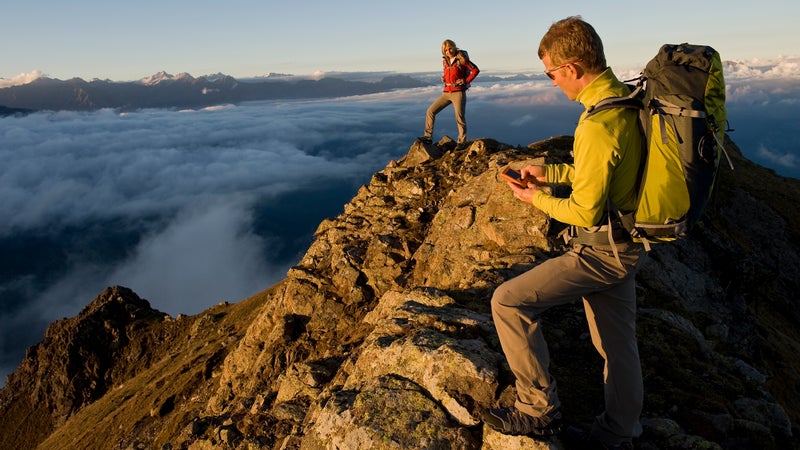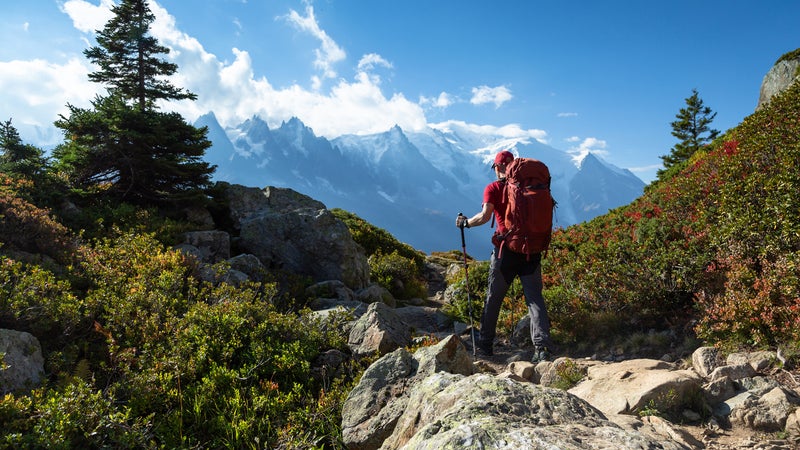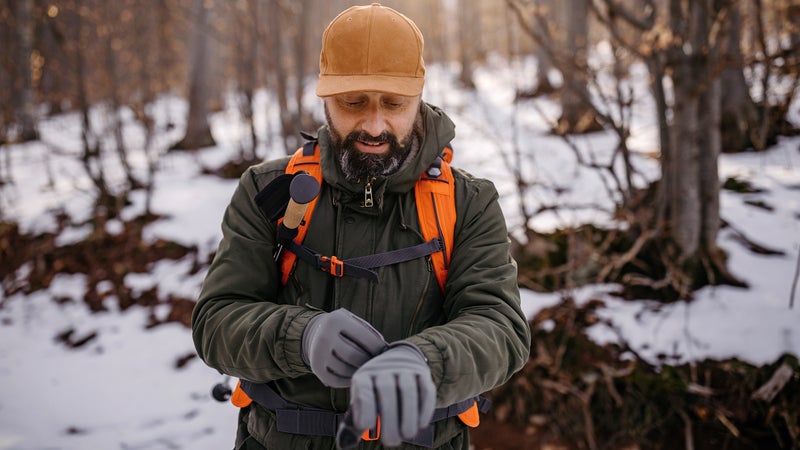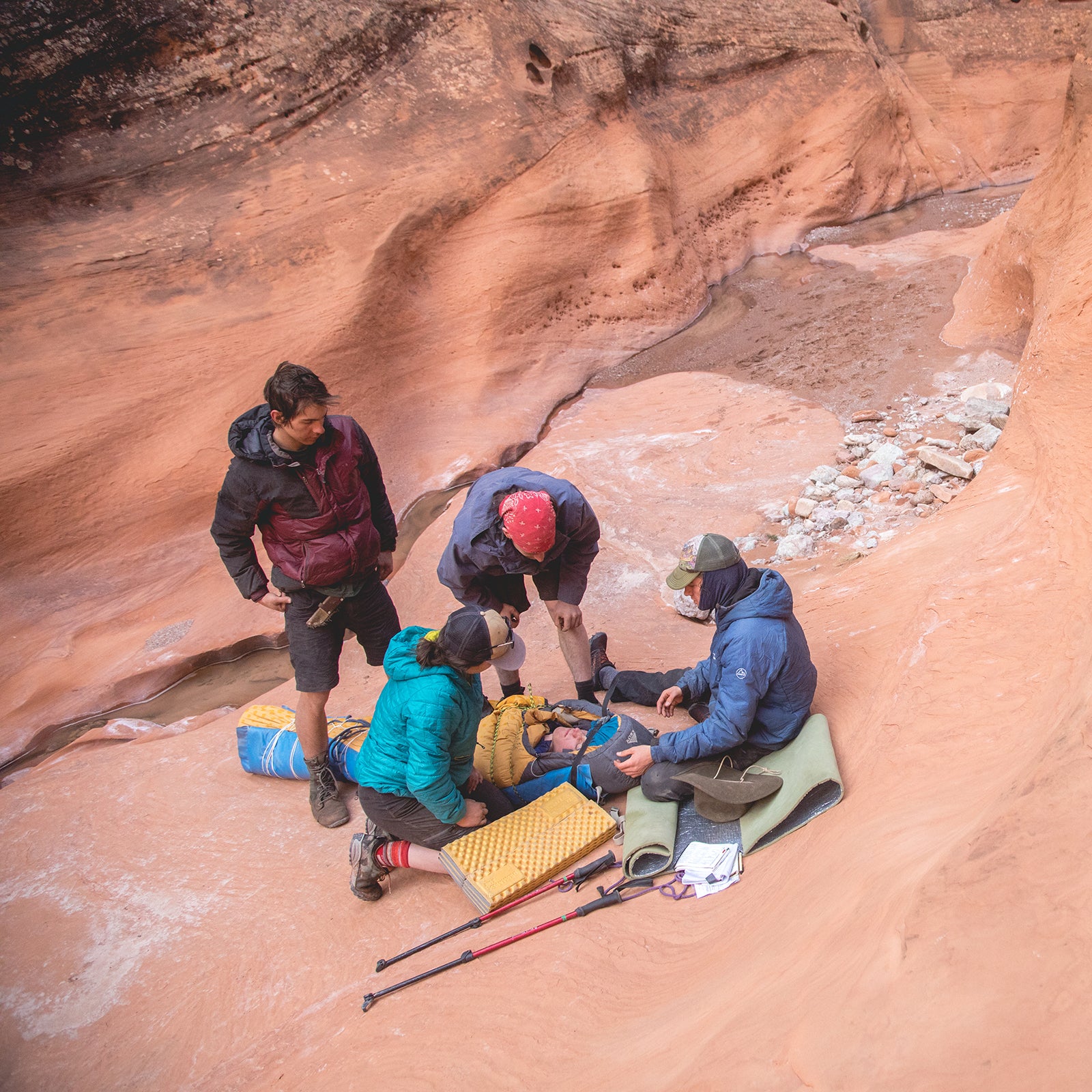Most outdoor gear can be broken down into three distinct categories: like to have, nice to have, and must-have. Hammocks, camp chairs, and summit beers fall comfortably into the first category. Spare wool socks, bug spray, and thick air mattress are all nice-to-have items. The last category, must-haves, are pieces required for a safe backcountry trip.
Gear Fix
Sign up for our gear e-mail newsletter for in-depth reviews, first impressions, industry news, and pro DIY tips.
To learn more about the must-haves, I spoke with Erik Swanson, who’s been a member of Washington’s King County Explorer Search and Rescue for the past eight and a half years, and Olivia Leader, who’s been part of the team for four years. Explorer Search and Rescue is one of the largest and most active volunteer organizations in the U.S. Its territory spans a county home to four million residents, rises from sea level up to 8,000 feet in the Cascades, has thousands of miles of trails, and sees a very active outdoor-recreation culture. The team heads out on about 150 missions each year, primarily in response to lost, overdue, or injured hikers who aren’t properly equipped for their outings.
After hundreds of combined missions, Swanson and Leader know the gear you need to carry to stay safe on your next adventure. Here are Outside‘s top picks from the categories they suggested.
GPS Communication Device

The gold standard for backcountry communication is the Garmin InReach Mini ($350), because it’s simple to use (and can be connected to your phone via Bluetooth and an app to make communications easier), reliable in almost all conditions, and has a fast two-way texting platform (especially through the app). With the SOS feature, you’re able to call quickly for help in emergencies or just let friends and family know that you’re safe if you’re running late.
Sufficient Hydration
The Explorer Search and Rescue team sees a lot of hikers carrying only a small water bottle for a couple hours of trekking, even in hot weather. Proper hydration, including some electrolyte replacement, like Gu Hydration Electrolyte Drink Tabs ($25 for 48), will keep you sharper both mentally and physically. It’s not a bad idea to bring both a bladder and a bottle, to guarantee you have enough. We like the old faithful Nalgene ($12) to start.
Rain Shell
Even in the summer, rain is common at elevation in the Cascades and in many other mountain ranges. Hiking with a reliable and breathable shell will keep you dry and warm. While it’s a tempting item to skimp on because good waterproof jackets are spendy, we recommend investing in something durable and high quality, such as the Verglas Shell ($325) from Helly Hansen. You won’t regret it, especially if you have to spend a night out in the woods.
Sturdy Boots with Ankle Support
Ankle injuries are some of the most common calls that search and rescue teams respond to. Mountain trails are often narrow, cut into a hillside, and flanked by rocks, trees, and bushes. Eventually, everybody makes a misstep on the trail, and ankle support would save a lot of those people from injury. Asolo has long been the favorite in tough, heavyweight hiking boots. A good lighter option is the newly launched Hoka Kaha ($220), which is waterproof and provides great traction.
Hiking Poles

For hikers carrying a loaded pack and tackling lots of vertical or technical terrain, poles will help keep you balanced, guide you past tripping hazards, and can be easily stored in your pack on more mellow terrain. New models, like the LT5 Carbon Poles ($195) from Gossamer Gear, are lightweight and highly versatile, better positioning you to cross rivers and snowfields, scramble over ridgelines, or march up steep switchbacks.
Alpine Backpack
The search and rescue team often finds stranded hikers without a pack—and without extra food, water, and layers. A small 20–to–30-liter pack provides enough space to allow you to bring a first aid kit, communication device, headlamp, and other items on this list. We like the Osprey Mutant 22 Pack ($100), a stripped-down climbing bag with good support.
Headlamp and Spare Batteries
You may think you’re just out for a couple hours, but many hikers need help when their day doesn’t go as planned. They often get a late start, move slower than expected, or spend more time at a summit than planned, only to find themselves heading back to the trailhead in the dark. While a phone can be used as a flashlight in a pinch, it’s better served as an emergency-communication device. The Petzl Actik ($50) is a solid, fairly priced headlamp.
Gloves

Hiking in the Cascades often means wading through brush, including sharp blackberry bushes and devil’s club. It can also involve scrambling across boulder fields, climbing scree, and forging through snow, even in the middle of summer—hazards familiar in mountains everywhere. To protect your hands, a good pair of leather gloves is essential. That might be a pair of standard leather work gloves, but climbing gloves like the Cordex from Petzl ($40) are more flexible.
This article originally attributed specific gear selections to members of King’s County Explorer Search and Rescue. These products were picked by our writer.


